Australian Tropical Rainforest Plants - Online edition
Opilia amentacea Roxb.
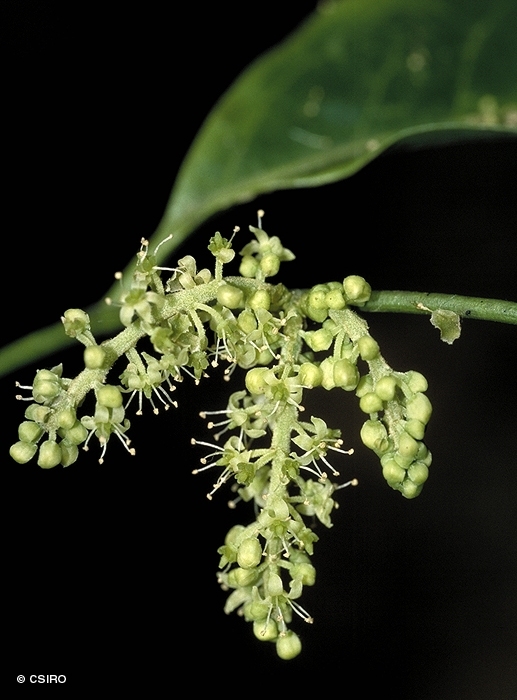
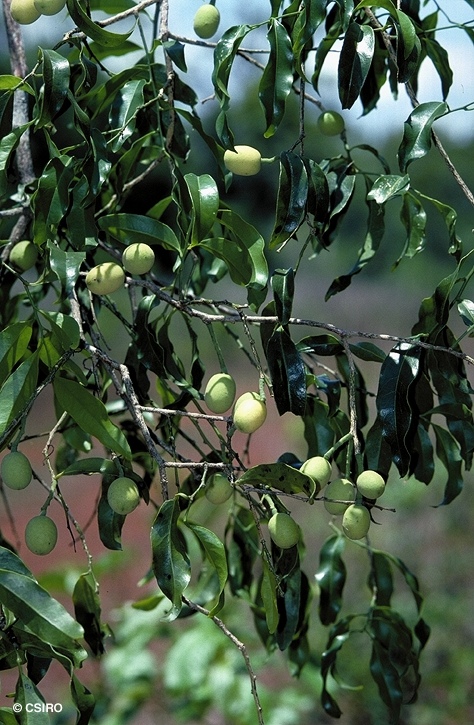
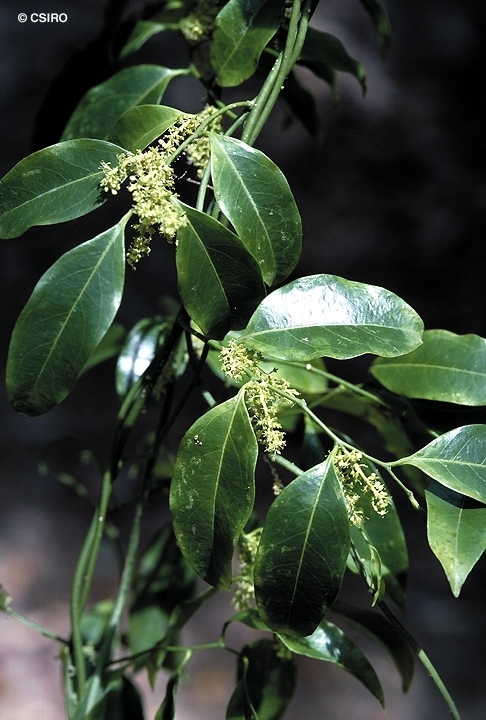
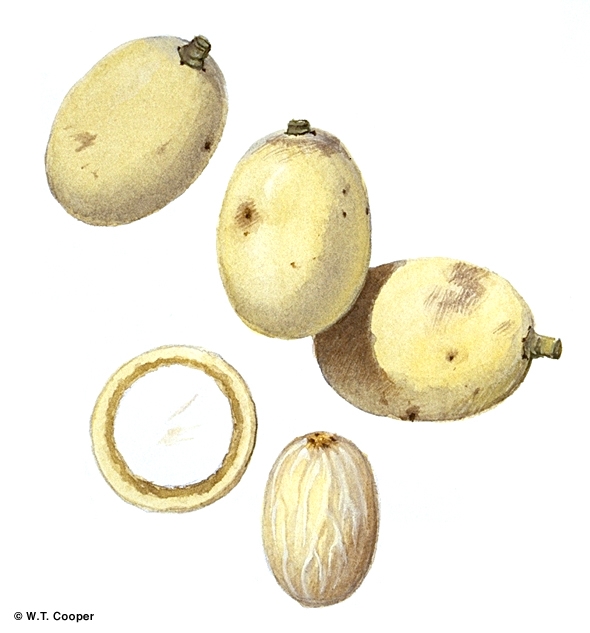
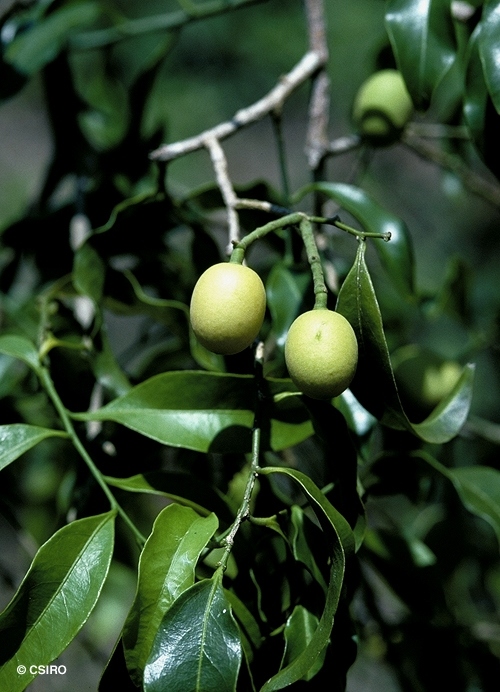




Roxburgh, W. (1802) Plants of the Coast of Coromandel : 31. Type: This is a small tree, a native of the mountainous parts of the Circars.
Opilia
Usually grows as a vine but can flower and fruit as a shrub about 2-5 m tall. Vine stem diameters to 9 cm recorded. Vascular rays more obvious in transverse sections of the bark than in the wood.
Leaf blades about 5-16 x 2-5 cm, petioles about 0.1-1 cm long. Lateral veins curving but not forming definite loops inside the blade margin. Reticulate veins tend to run +/- at right angles to the midrib. Dried leaves tuberculate on the upper surface. Leaf bearing twigs usually green and glabrous and arranged as short shoots on the main twigs or branches. Lateral branches flattened and modified to form tendrils.
Tap root white, somewhat thickened, cataphylls numerous, about 6-8. At the tenth leaf stage: leaf blade lanceolate, apex acuminate, base cuneate, petiole absent. Dried leaves tuberculate or pusticulate on the upper surface. Lenticels usually conspicuous on the stem. Seed germination time 37 to 63 days.
May be parasitic on the roots of other plants.





